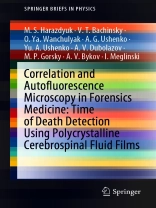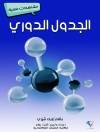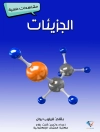This book highlights the first systematic synthesis of various research approaches in forensic medical diagnosis of the morphological and polycrystalline structure of human biological tissues and biological fluids. One of the global challenges in such diagnosis is the assessment of actual time of death. The relevance and objectivity of such studies are given by the innovative use of complex multifunctional methods using lasers and Mueller-matrix polarimetry, which is presented in this book. As a result, within the framework of the statistical, correlation and fractal approaches, diagnostic relationships were established between the time parameters of the transformation of the topographic structure of polarization-inhomogeneous microscopic images of biological preparations and necrotic changes in the morphological structure of biological tissues of the deceased. On this foundation, new forensic medicine criteria have been developed for objective determination of time of death.
Tabela de Conteúdo
Materials and Methods.- Determination of the Time of Death Onset Based on a Statistical Analysis of the Distributions of the Values of the Complex Degree of Mutual Polarization of Microscopic Images of Polycrystalline Films of Cerebrospinal Fluid.- Studies of the Forensic Effectiveness of Determination of the Time of Death Onset Based on Laser-Induced Fluorescence of Polycrystalline Films of Cerebrospinal Fluid.
Sobre o autor
Marta S. Harazdyuk is Associate Professor of Forensic Medicine and Medical Law Department of the Higher State Educational Establishment of Ukraine «Bukovinian State Medical University», Chernivtsi, Ukraine. In 2010, he graduated from Bukovinian State Medical University, Chernivtsi, Ukraine, Medical Faculty №1, specialty ‘Medical Affairs.’ In 2018, he received a degree: Candidate of Medical Sciences under the code 14.01.25 – Forensic Medicine. His dissertation topic includes ‘Temporary monitoring of post-mortem changes in the autofluorescence of cerebrospinal fluid films in post-mortem interval estimation.’ In 2020, he received the academic title of Associate Professor of Forensic Medicine and Medical Law Department.
Victor Bachinskyi was born in 1952. In 1976, he graduated from Chernivtsi State Medical Institute. He received Candidate of Medical Sciences in 1988. Title of Associate Professor of the Department of Pathology and Forensic Medicine in Bukovinian State Medical University was awarded in 1991. Doctor of Medical Sciences from 2009, the topic of his dissertation was: ‘Laser spectroscopy of biological tissues to develop objective criteria forensic determination of death and old time hematoma formation.’ He awarded the title of Professor of the Department of Pathology and Forensic Medicine in 2011.
Oleg Wanchulyak, born in 1976, received Candidate of Medical Sciences in 2007. He defended his thesis on ‘Diagnosis of death prescription by laser polarimetric monitoring of human tissue;’ MD in 2017, defended his doctoral thesis on ‘Peer review of acute myocardial ischemia polarization-correlation method.’ In 2009, he awarded the highest category of medical specialty ‘Forensic examination’ and transferred to the post of Associate Professor in Bukovina State Medical University. In 2011, he received the rank of Associate Professor. From September 2018, he holds the position of Professor of the department of Forensic Medicine.
Alexander G. Ushenko is Professor at Chernivtsi National University and Head of Optics and Publishing Department. He received his B.S. and M.S. degrees in Optics from the Chernivtsi State University in 1975 and 1977, respectively, and his Ph.D. degree in Optics and Laser Physics from the Chernivtsi State University in 1983. In 2000, he obtained D.Sc. in Optics and Laser Physics. He is the author of more than 200 journal papers, 60 patents and 20 monographies. His current research interests include laser polarimetry, polarization interferometry and digital holography.
Yuriy A. Ushenko was born on December 23, 1980, in Chishinau, Moldova. He received M.Sc. in Telecommunications (2003), Ph.D. in Optics and Laser Physics (2006) and D.Sc. in Optics and Laser Physics, Taras Shevchenko National University of Kyiv (2015). His current position is Professor and Head of Computer Science Department, Chernivtsi National University, Ukraine.
Alexander Dubolazov is Associate Professor at the Chernivtsi National University. He received his B.S. and M.S. degrees in optics from the Chernivtsi National University in 2006 and 2007, respectively, and his Ph.D. degree in optics, laser physics from the Chernivtsi National University in 2010. He is the author of more than 100 journal papers and has written five book chapters. His current research interests include laser polarimetry, holography, etc.
Mykhailo Gorsky is an Assistant Professor at the Chernivtsi National University. He received his BS and MS degrees in optics from the Chernivtsi National University in 2001 and 2002, respectively, and his Ph D degree in optics, laser physics from the Chernivtsi National University in 2011. He is the author of more than 70 journal papers. His current research interests include laser polarimetry, light scattering by polycrystalline objects, singular optics etc.
Alexander Bykov is currently Adjunct Professor (Docent) and Senior Research Fellow at the University of Oulu. A. Bykov received his Ph.D. in Physics in 2008 from the M.V. Lomonosov Moscow State University, Russia, and Dr.Sc. in Technology in 2010 from the University of Oulu, Finland. His current research interests focus on the polarization diagnostics of biotissues aiming at differentiation between healthy and pathological conditions as well as on the hyperspectral techniques for functional tissue characterization. He has over 12 years of research experience in the fields of photonics and biomedical optics. Dr. Bykov has published over 80 scientific peer-reviewed papers, 4 book chapters and over 50 presentations at the international conferences, including 15 invited lectures.
Igor Meglinski is Professor in Biophotonics and Biomedical Engineering. His research interests lie at the interface between physics, optical and biomedical engineering, sensor technologies and life sciences, focusing on the development of new non-invasive imaging/diagnostic techniques and their application in medicine & biology, material sciences, pharmacy, environmental monitoring, food and healthcare industries. He is the author and the co-author of over 350 research papers in peer-reviewed scientific journals, proceedings of international conferences, book chapters and professional magazines. He delivered over 720 presentations at the major international conferences, including over 300 invited lectures, keynote and plenary talks. He is Chartered Physicist (CPhys) and Chartered Engineer (CEng), Senior Member of IEEE, Fellow of the Institute of Physics and Fellow of SPIE.












